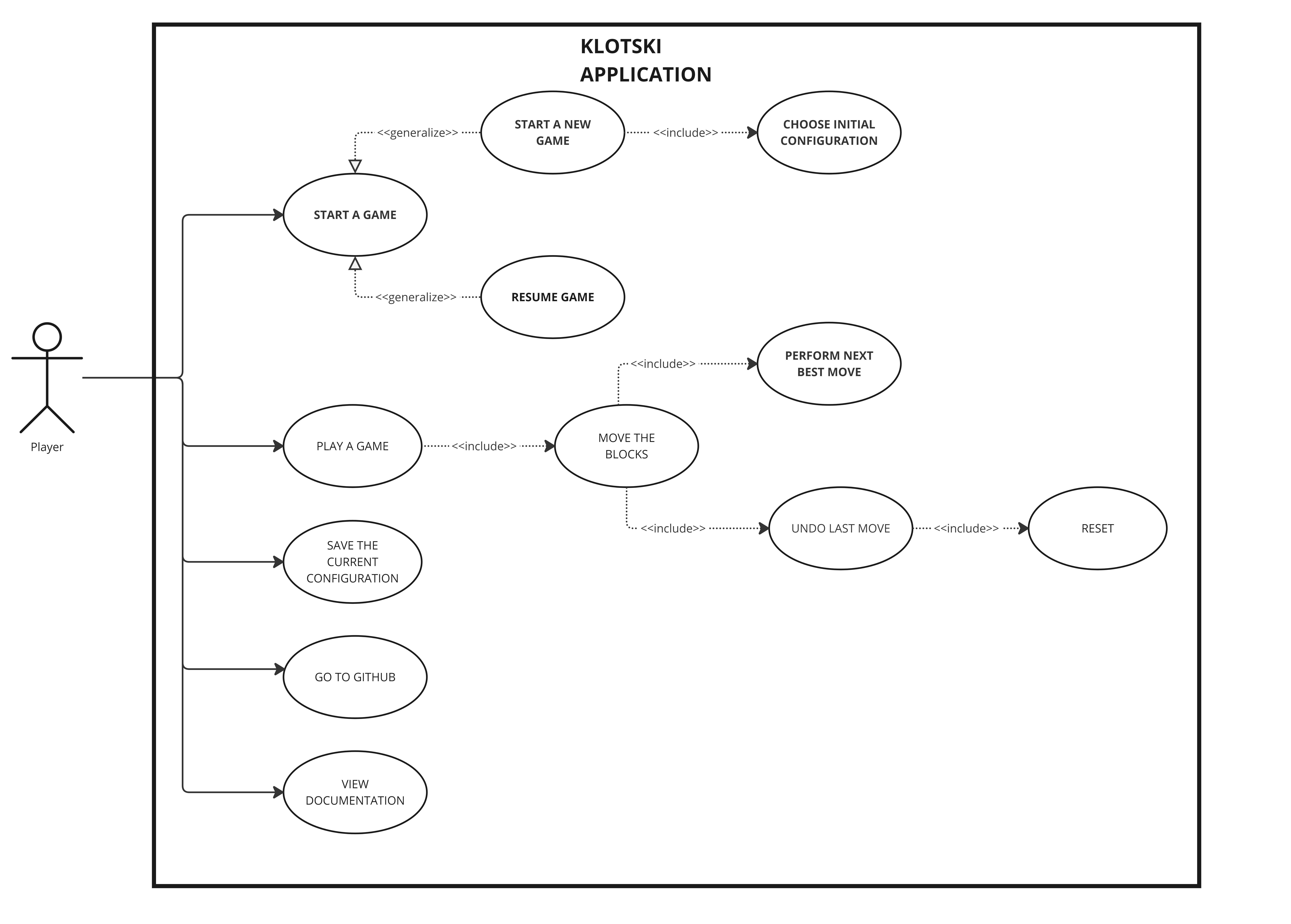Use cases
The first design meetings tackled about the actions the User would have to be able to perform. The team decided to work on an application with three main Scenes:
- Scene #1: The starting menù
- Scene #2: The level selection menù
- Scene #3: The main playing menù
Later, a set of use cases were developed for each Scene.
The team so proceded
creating the use case diagram.
Use case #1
|
Use case name |
Start a game |
|
Actors |
|
|
Description |
The User starts a game, either performing use case #2 or use case #3. |
|
Preconditions |
None |
|
Flow |
|
|
Postconditions |
The user is on Scene #2 viewing the 4 configs to chose from, or the user is on Scene #3 viewing the game board with the chosen configuration. |
Use case #2
|
Use case name |
Start a new game |
|
Actors |
|
|
Description |
The User starts a new game. |
|
Preconditions |
None |
|
Flow |
|
|
Postconditions |
The User is on Scene #3 viewing the game board with one of the default configurations. |
Use case #3
|
Use case name |
Resume Game |
|
Actors |
|
|
Description |
The User resume a saved game. |
|
Preconditions |
Use case #10 must have been performed at least once |
|
Flow |
|
|
Postconditions |
The User is on Scene #3 viewing the game board with the previously saved configuration. |
Use case #4
|
Use case name |
Choose initial configuration |
|
Actors |
|
|
Description |
The User chooses the initial configuration from four default configurations. |
|
Preconditions |
User must be on Scene #2 |
|
Flow |
|
|
Postconditions |
The User is on Scene #3 viewing the game board with the chosen default configuration. |
Use case #5
|
Use case name |
Play the game |
|
Actors |
|
|
Description |
The User can play the game according to klotski rules and solve a puzzle. |
|
Preconditions |
Use case #1 |
|
Flow |
|
|
Postconditions |
"Level Completed" message appears if final configuration is reached |
Use case #6
|
Use case name |
Move the blocks |
|
Actors |
|
|
Description |
The User can move the blocks according to the klotksi rules. |
|
Preconditions |
Use case #1 |
|
Flow |
|
|
Postconditions |
The board configuration modifies according to the moved blocks |
Use case #7
|
Use case name |
Undo last move |
|
Actors |
|
|
Description |
The board configuration returns as it was before the latest move was performed. |
|
Preconditions |
Use case #6 must have been performed at least once |
|
Flow |
|
|
Postconditions |
The board configuration must return as it was before the latest move was performed. |
Use case #8
|
Use case name |
Reset |
|
Actors |
|
|
Description |
The User reset the board configuration to the default one. |
|
Preconditions |
Use case #6 must have been performed at least once |
|
Flow |
|
|
Postconditions |
The board configuration returns to the starting state. |
Use case #9
|
Use case name |
Next Best Move |
|
Actors |
|
|
Description |
The User makes the system playing the next best move. |
|
Preconditions |
|
|
Flow |
|
|
Postconditions |
The user is viewing the configuration after the next best move is performed. |
Use case #10
|
Use case name |
Save |
|
Actors |
|
|
Description |
The User saves the current board configuration. |
|
Preconditions |
Use case #6 must have been performed at least once |
|
Flow |
|
|
Postconditions |
The current board configuration must be saved locally. |
Use case #11
|
Use case name |
Go to GitHub |
|
Actors |
|
|
Description |
The User opens the GitHub repository |
|
Preconditions |
Internet connection |
|
Flow |
|
|
Postconditions |
The GitHub repository webpage is open on the browser. |
Use case #12
|
Use case name |
Show Documentation |
|
Actors |
|
|
Description |
The User opens the documentation web page. |
|
Preconditions |
Internet connection |
|
Flow |
|
|
Postconditions |
The documentation web page is open on the browser. |
